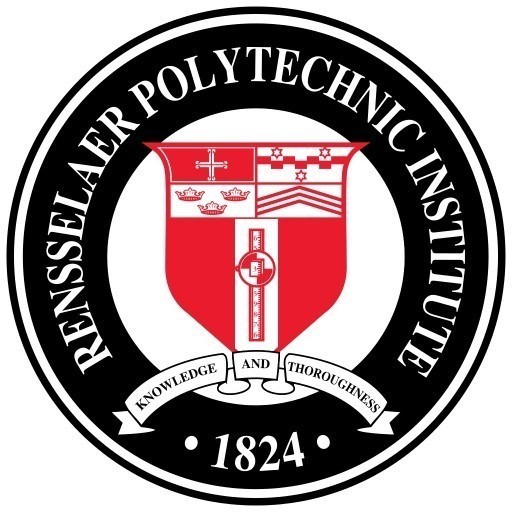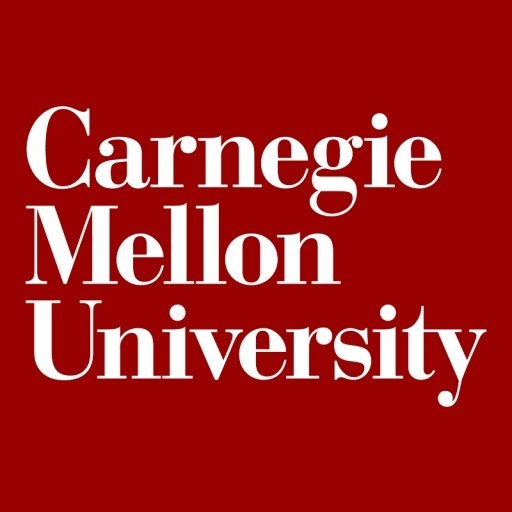Photos of university / #harvard
The Harvard University Bachelor of Arts in Architecture offers a comprehensive and multidisciplinary approach to the study of architecture, combining rigorous academics with practical design experience. This program is designed to develop students’ critical thinking, creative problem-solving abilities, and an understanding of the cultural, environmental, and technological contexts that influence architectural design. Students engage with a wide range of courses spanning history, theory, technology, and studio practice to foster a well-rounded understanding of the discipline. The curriculum emphasizes sustainable and innovative design principles, encouraging students to address contemporary challenges such as climate change, urbanization, and social equity. Through a combination of lectures, seminars, and extensive hands-on studio work, students learn to conceptualize and develop architectural solutions that are both aesthetically compelling and functionally effective. The program promotes collaboration and interdisciplinary learning, often involving partnerships with departments such as history, art, engineering, and environmental studies. Students have access to state-of-the-art facilities, including design studios, fabrication labs, and digital modeling tools, enabling them to bring their ideas to life using the latest technologies. The faculty, consisting of experienced architects, scholars, and industry professionals, mentors students throughout their academic journey, providing valuable insights and real-world perspectives. Graduates of the program are well-prepared for careers in architecture, urban planning, interior design, and related fields, or for further study in graduate architecture programs. Harvard’s architecture program also emphasizes ethical responsibilities and the societal impact of architectural practices, instilling a sense of stewardship and innovation in all students. With a rich history of pioneering architectural education and a commitment to excellence, Harvard’s program offers an inspiring environment for aspiring architects to develop their skills and shape the future of built environments worldwide.
For students entering without advanced standing, a minimum of seven terms of full-time study in residence, including thesis, is required. Individuals admitted with advanced standing normally begin with the third term of the program and must complete a minimum of five terms of full-time study in residence. Under special circumstances, students may receive permission to reduce their course load and extend their studies over a longer period of time.
A candidate will be recommended for the Master in Architecture as a professional degree upon satisfactory completion of a minimum of 140 units. MArch I students pursue the following seven semester course of study:
First semester
- 8 UNITS GSD 1101 First Semester Architecture Core Studio: PROJECT
- 2 UNITS GSD 2121 (M1) Architectural Representation I
- 2 UNITS GSD 2122 (M2) Architectural Representation II
- 4 UNITSGSD 4121 Buildings, Texts, and Contexts I
- 2 UNITS GSD 6121 (M1) Environmental Systems I
- 2 UNITS GSD 6122 (M2) Environmental Systems II
Second semester
- 8 UNITS GSD 1102 Second Semester Architecture Core: SITUATE
- 4 UNITS GSD 4122 Buildings, Texts, and Contexts II
- 2 UNITS GSD 6125 (M3) Building Simulation
- 2 UNITS GSD 6126 (M4) Materials
- 4 UNITS GSD 6227 Structural Design I
Third semester
- 8 UNITS GSD 1201 Third Semester Architecture Core Studio: INTEGRATE
- 4 UNITS GSD 6123 Construction Systems
- 4 UNITS GSD 6229 Structural Design II
- 4 UNITSDigital Media Requirement or Distributional or General Electives
Fourth semester
- 8 UNITS GSD 1202 Fourth Semester Architecture Core Studio: RELATE
- 4 UNITS GSD 4223 Buildings, Texts, and Contexts III
- 4 UNITS GSD 6230 Cases in Contemporary Construction
- 4 UNITS Digital Media Requirement*** or Distributional or General Electives
Fifth semester
- 8 UNITS Option Studio
- 4 UNITS GSD 7212 Foundations of Practice
- 8 UNITS Distributional or General Electives
Sixth semester
- 8 UNITS Option Studio
- 4 UNITSGSD 9203 Thesis Prep Course (or pre-approved alternative)
- 8 UNITS Distributional or General Electives
Note: The department encourages students to take electives that support thesis interests during their sixth semester.
Seventh semester
- 12 UNITS GSD 9301 Independent Design Thesis
- 8 UNITS Distributional or General Electives
Admission with No Previous Professional Education
Individuals who have completed a four-year Bachelor of Arts or Bachelor of Science degree in any field (architecture or other) are eligible for admission to the first term of the professional degree program. Preference for admission is given to applicants who have completed a balanced undergraduate education that includes study in the arts, sciences, and humanities. Four college-level, semester-long courses are specifically required as prerequisites for admission to the M.Arch-1 program: one semester of calculus; one semester of physics (algebra-based, covering mechanics and thermodynamics); and two semesters of history of architecture(together covering Renaissance through Modern periods at minimum). Applicants must achieve a grade of B- or better in each of these courses. Applicants who have scored a 4 or 5 on AP Calculus or AP Physics exams will be considered to have met these prerequisites only if their undergraduate transcript acknowledges the results by awarding institutional credit.
Preparation in the visual arts is desirable and may include drawing, sculpture, and/or graphics. Courses in the humanities, philosophy, literature, and economics are also recommended but are not required.
The Graduate School of Design offers a Pre-Core Workshop to incoming students, which is required for all entering Master in Architecture students without an undergraduate degree in architecture. The workshop may also be required or recommended for students whose portfolios demonstrate a need for more depth of knowledge with software used to design and represent architectural projects (for example, Rhino, V-Ray, AutoCAD, Illustrator, Photoshop). The workshop allows students to set up their computers, their GSD network accounts, and to familiarize themselves with the GSD’s Digital facilities prior to the start of classes. Most importantly, the workshop allows incoming students to gain a basic knowledge of the workflows and digital techniques used in the context of studios: 3D software basics, rendering basics, data-transfer from 3D software, output and model building techniques using CAD/CAM facilities. No academic credit is given for the workshop. Please refer to last year's syllabus for additional details.
The Harvard University Architecture Program offers a range of financing options to support students throughout their studies. Tuition fees for the program vary depending on the year of study and whether the student is enrolled full-time or part-time. For the most current academic year, the estimated tuition for full-time students is approximately $60,000 per year. In addition to tuition, students should budget for other expenses such as fees, books, supplies, housing, and personal expenses, which can add another $20,000 to $30,000 annually.
Harvard University provides numerous financial aid opportunities, including need-based grants, fellowships, and scholarships to help reduce the financial burden. The university's commitment to affordability means that admission is largely need-blind for U.S. applicants, and Harvard is dedicated to meeting 100% of demonstrated financial need for admitted students. International students are also eligible for need-based financial aid, making Harvard accessible to talented students worldwide regardless of their economic background.
Students pursuing the architecture degree can apply for various fellowships and scholarships specific to design and architecture fields. These may be offered by Harvard Graduate School of Design, external foundations, and industry organizations. Some students may qualify for federal student aid programs or private loans to finance their education. Harvard also encourages students to explore external funding sources such as government grants, private scholarships, and work-study programs.
Graduate students in architecture often have opportunities for research assistantships, teaching fellowships, or internship stipends, which can provide additional income during their studies. These positions are competitive and may require students to commit a certain number of hours per week but help offset costs and enhance professional experience.
In summary, Harvard University offers a comprehensive financial support structure for architecture students, combining institutional aid, external scholarships, and work opportunities to make the program accessible to a diverse range of students. Prospective students are encouraged to carefully review the financial aid options and application procedures each year, and to complete the necessary paperwork well in advance of deadlines to maximize their chances of receiving aid.
The Harvard University Department of Architecture offers a comprehensive program designed to provide students with a thorough understanding of architectural design, history, theory, and technology. The undergraduate program, Bachelor of Arts in Architecture, emphasizes critical thinking, innovative design practices, and the integration of architectural principles with contemporary issues. Students engage in studio courses that foster creativity and technical proficiency, complemented by coursework in architectural history, digital design tools, and sustainable building practices. Graduates are equipped to pursue careers in architecture, urban planning, historic preservation, or further graduate study.
The program encourages interdisciplinary collaboration and emphasizes the importance of contextual analysis and environmental responsibility. Students have access to Harvard’s extensive resources, including the Harvard Art Museums, the Harvard Library, and the Harvard Graduate School of Design facilities, which enhance their research and design capabilities. The curriculum is structured to balance theoretical knowledge with practical application, preparing students for the evolving demands of the architectural profession.
In addition to the core coursework, students often participate in internships, study abroad programs, and externships that provide real-world experience and global perspectives. The faculty comprises distinguished architects, theorists, and educators who bring diverse expertise to the classroom. The program culminates in a thesis project, allowing students to demonstrate their mastery of design, research, and critical analysis.
Harvard's architecture program also emphasizes the importance of sustainability and innovation, encouraging students to develop environmentally responsible solutions. Graduates from the program are well-prepared to contribute to innovative architectural practices, engage in research, or continue their education at the graduate level, including Harvard’s own Graduate School of Design or other top institutions worldwide. The program fosters an inclusive and collaborative environment, promoting leadership, ethical responsibility, and a lifelong commitment to architectural excellence.








